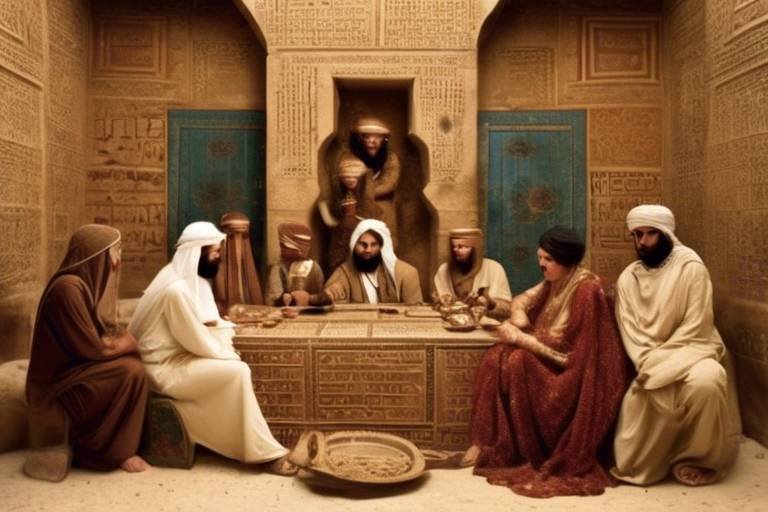The Importance of Community-Based Heritage Management
Community-based heritage management plays a crucial role in preserving and promoting cultural heritage sites, traditions, and practices. By involving local communities in these efforts, we ensure the sustainability and authenticity of our shared cultural heritage. This approach goes beyond mere preservation; it fosters a deeper connection between people and their heritage, creating a sense of ownership and responsibility.
When communities are empowered to safeguard their unique heritage, it not only preserves cultural identity but also fosters a sense of pride, belonging, and continuity of cultural traditions for future generations. This active involvement ensures that traditions are passed down and cherished, rather than fading into obscurity.
Moreover, community-based heritage management contributes to sustainable tourism development. By harnessing local knowledge and resources, responsible tourism initiatives can be developed that benefit local economies while safeguarding heritage sites and traditions. This approach promotes tourism that is respectful of local cultures and environments, creating a win-win situation for all involved.
Community engagement and empowerment are at the core of this management approach. By involving local residents in decision-making processes and management strategies, a sense of ownership and active participation in heritage conservation efforts is cultivated. This not only strengthens the bond between the community and its heritage but also ensures that conservation efforts are sustainable and effective.
Education and awareness are key components of community-based heritage management. Implementing educational programs raises awareness about the importance of heritage preservation, fostering a deeper understanding and appreciation of cultural significance within communities. This knowledge empowers individuals to take pride in their heritage and actively participate in its conservation.
Facilitating the transfer of traditional knowledge and skills between generations is another vital aspect of community-based heritage management. This inter-generational knowledge transfer ensures the continuity of cultural practices and heritage conservation efforts, preserving valuable traditions for the future.
Capacity building is essential in empowering community members to effectively manage their heritage. Providing training and resources enhances their skills in heritage management, promoting sustainable practices and effective conservation techniques. This investment in human capital ensures that communities are equipped to preserve their heritage for generations to come.
Collaboration with stakeholders is crucial for the success of community-based heritage management initiatives. By establishing partnerships with government agencies, NGOs, and other stakeholders, support can be garnered to ensure the long-term success of these efforts. This collaborative approach strengthens the network of support for heritage conservation and management.
Adaptation to changing environments is a key consideration in community-based heritage management. Developing flexible strategies allows communities to adapt to evolving challenges and opportunities while maintaining the authenticity and integrity of their cultural heritage. This adaptability ensures that heritage conservation efforts remain relevant and effective in a constantly changing world.

Preservation of Cultural Identity
In today's fast-paced world, where globalization is on the rise, preserving cultural identity has become more crucial than ever. When we talk about the preservation of cultural identity, we are not just safeguarding historical artifacts or monuments; we are preserving the very essence of who we are as a community. It's about empowering local communities to take pride in their unique heritage, ensuring that traditions and practices are passed down from generation to generation like a precious heirloom.
Imagine a community that has nurtured its customs, language, and rituals for centuries, each aspect contributing to a rich tapestry of culture. By actively involving these communities in the management and preservation of their heritage, we are not only protecting tangible assets but also fostering a sense of belonging and continuity. This sense of pride instills a deep-rooted connection to the past, present, and future, creating a strong foundation for cultural sustainability.
Through community-based heritage management, we can ensure that the stories of our ancestors, the craftsmanship of artisans, and the rituals of our forefathers are not lost in the whirlwind of modernization. It's about cherishing the diversity that makes each community unique and celebrating the threads that weave us together as a global society.

Sustainable Tourism Development
Sustainable tourism development is a crucial aspect of community-based heritage management. By harnessing the knowledge and resources of local communities, it is possible to create tourism initiatives that not only benefit the local economy but also preserve the authenticity of heritage sites and traditions. This approach ensures that tourism activities are conducted in a responsible manner, taking into account the cultural significance and environmental impact of the destinations. Through collaboration with stakeholders, such as government agencies and NGOs, communities can develop sustainable practices that support both heritage conservation and economic growth. By engaging in sustainable tourism development, communities can showcase their unique cultural heritage to visitors while safeguarding it for future generations.

Community Engagement and Empowerment
Community engagement and empowerment play a crucial role in the successful management of cultural heritage. By involving local residents in decision-making processes and management strategies, a sense of ownership and responsibility is instilled within the community. This active participation fosters a deeper connection to the heritage sites and traditions, leading to more effective conservation efforts.
Moreover, empowering communities to take charge of their heritage management not only ensures the preservation of cultural identity but also promotes sustainable practices. Through education and awareness programs, residents gain a better understanding of the significance of their heritage, motivating them to actively contribute to its protection and promotion.
Collaboration with stakeholders, including government agencies and NGOs, further strengthens community engagement efforts. By establishing partnerships, communities can access additional resources and expertise, enhancing their capacity to manage and conserve their cultural heritage effectively.
Furthermore, by facilitating inter-generational knowledge transfer, communities can pass down traditional skills and practices to future generations. This continuity is essential for maintaining the authenticity and integrity of cultural heritage, ensuring that it remains vibrant and relevant in the face of evolving challenges and opportunities.

Education and Awareness
Education and awareness play a crucial role in fostering a deeper appreciation and understanding of cultural heritage within local communities. By implementing educational programs, communities can learn about the significance of heritage preservation and the value it holds for future generations. These programs not only educate residents about the importance of safeguarding their cultural identity but also instill a sense of pride and responsibility in preserving their heritage.
Furthermore, raising awareness about cultural heritage helps in building a stronger connection between community members and their traditions. Through workshops, seminars, and interactive sessions, individuals can engage with their heritage on a deeper level, leading to a greater sense of belonging and cultural pride. By involving residents in these educational initiatives, communities can ensure the continuity of their cultural practices and traditions for years to come.

Inter-generational Knowledge Transfer
Inter-generational Knowledge Transfer plays a crucial role in preserving cultural heritage by ensuring that traditional knowledge and practices are passed down from one generation to the next. This transfer of knowledge not only maintains the authenticity of cultural practices but also fosters a sense of continuity and connection between different age groups within a community.
Through inter-generational knowledge transfer, older members of the community can impart their wisdom, skills, and experiences to younger generations, allowing them to learn and carry forward the cultural heritage of their ancestors. This process helps to bridge the gap between the past and the present, creating a strong foundation for the future preservation of cultural traditions.
One effective way to facilitate inter-generational knowledge transfer is through mentorship programs, where experienced individuals mentor and guide younger community members in learning traditional practices. This hands-on approach not only ensures the transfer of skills but also strengthens relationships within the community, fostering a sense of unity and collaboration.
Furthermore, inter-generational knowledge transfer can be enhanced through storytelling and oral history traditions, where elders share stories, myths, and legends with the younger generation. These narratives not only transmit valuable cultural knowledge but also instill a sense of pride and identity in the younger members of the community.
By actively engaging in inter-generational knowledge transfer, communities can preserve their cultural heritage in a dynamic and sustainable way, ensuring that future generations inherit a rich tapestry of traditions, values, and practices that define their unique identity.

Capacity Building
Capacity building in community-based heritage management is a crucial aspect that focuses on empowering local residents with the necessary skills and knowledge to effectively preserve and promote cultural heritage. By providing training programs and resources, communities can enhance their abilities in heritage management, ensuring the sustainability and authenticity of their practices.
One key component of capacity building is the transfer of traditional knowledge and skills between generations. This process not only preserves cultural practices but also strengthens the bond between community members, fostering a sense of continuity and shared identity. Through inter-generational knowledge transfer, communities can ensure that their heritage remains alive and relevant for future generations.
In addition to knowledge transfer, capacity building initiatives aim to promote sustainable practices and effective conservation techniques within communities. By equipping residents with the skills to manage heritage sites responsibly, these programs contribute to the long-term preservation of cultural assets. Moreover, capacity building fosters a sense of ownership and pride among community members, encouraging active participation in heritage conservation efforts.
Collaboration plays a vital role in capacity building, as partnerships with government agencies, NGOs, and other stakeholders can provide additional resources and expertise to support community-led initiatives. By working together, stakeholders can leverage their collective strengths to address challenges and opportunities effectively, ensuring the success of capacity building programs in heritage management.

Collaboration with Stakeholders
Collaboration with stakeholders is a crucial aspect of community-based heritage management. By establishing partnerships with government agencies, non-governmental organizations (NGOs), and other stakeholders, communities can receive the necessary support and resources to effectively preserve and promote their cultural heritage.
These partnerships play a significant role in supporting community-based initiatives and ensuring their long-term success. Government agencies can provide funding and regulatory support, while NGOs often bring expertise and technical assistance to the table. By working together, stakeholders can leverage their strengths and resources to address challenges and achieve common goals.
Moreover, collaboration with stakeholders helps in creating a network of support for heritage conservation efforts. By involving a diverse range of partners, communities can access a variety of perspectives and ideas, leading to more innovative and sustainable solutions. This collective approach fosters a sense of shared responsibility and ownership, encouraging active participation and engagement from all involved parties.
Additionally, partnerships with stakeholders can facilitate knowledge exchange and capacity building. Government agencies may offer training programs, while NGOs can provide access to research and best practices in heritage management. Through these collaborations, communities can enhance their skills and knowledge, enabling them to implement effective conservation strategies and sustainable practices.
In essence, collaboration with stakeholders is not just about sharing resources; it is about building relationships and fostering a collective commitment to preserving and promoting cultural heritage. By working together, communities and stakeholders can ensure the authenticity and integrity of heritage sites and traditions, creating a sustainable legacy for future generations.

Adaptation to Changing Environments
In the realm of heritage management, the ability to adapt to changing environments is crucial for the long-term sustainability of cultural sites and practices. Communities engaged in preserving their heritage must navigate through various challenges, including environmental changes, societal shifts, and economic fluctuations. By developing flexible strategies that can adjust to evolving circumstances, these communities can ensure the continued relevance and vitality of their cultural heritage.
Imagine a community nestled in the mountains, where a centuries-old tradition of handcrafting exquisite textiles is at risk due to climate change affecting the availability of raw materials. Through adaptation, this community can explore alternative sources, modify techniques, or even innovate new practices while still honoring the essence of their heritage. This flexibility allows them to thrive in the face of adversity, preserving their cultural identity while embracing change.
Adaptation also involves preparing for the unexpected, such as the sudden influx of tourists or the emergence of new technologies that impact heritage management. By staying proactive and open to innovation, communities can safeguard their traditions while seizing opportunities for growth and development. This dynamic approach not only ensures the resilience of cultural heritage but also fosters a spirit of creativity and resilience within the community.
Moreover, adaptation is not just about reacting to external forces but also about fostering internal capacity and knowledge. Communities engaged in heritage management must continuously invest in education and skill-building to empower future generations to carry forward their legacy. By nurturing a culture of learning and adaptation, these communities can stay ahead of the curve and respond effectively to the challenges of a rapidly changing world.
In essence, adaptation to changing environments is a cornerstone of community-based heritage management, enabling communities to navigate uncertainties, embrace opportunities, and preserve their cultural heritage for generations to come. By embracing flexibility, innovation, and continuous learning, these communities can ensure that their heritage remains vibrant, relevant, and resilient in the face of a dynamic and ever-changing world.
Frequently Asked Questions
- What is community-based heritage management?
Community-based heritage management involves actively engaging local communities in the preservation and promotion of cultural heritage sites, traditions, and practices. It empowers residents to take ownership of their heritage, ensuring its sustainability and authenticity.
- Why is community involvement important in heritage preservation?
Community involvement is crucial as it fosters a sense of pride, belonging, and continuity of cultural traditions. When local residents are actively engaged, they become stewards of their heritage, leading to more effective conservation efforts and sustainable tourism development.
- How does community-based heritage management benefit sustainable tourism?
By leveraging community knowledge and resources, sustainable tourism initiatives can be developed that not only benefit local economies but also preserve heritage sites and traditions. This approach ensures that tourism activities are responsible and contribute to the overall well-being of the community.
- What role does inter-generational knowledge transfer play in heritage conservation?
Inter-generational knowledge transfer is essential for the continuity of cultural practices and heritage conservation efforts. It ensures that traditional skills and wisdom are passed down from one generation to the next, safeguarding the authenticity and integrity of cultural heritage.
- How can stakeholders collaborate in community-based heritage management?
Stakeholders, including government agencies, NGOs, and other organizations, can collaborate with local communities to support heritage management initiatives. By working together, they can provide resources, expertise, and funding to ensure the long-term success of conservation projects.



















